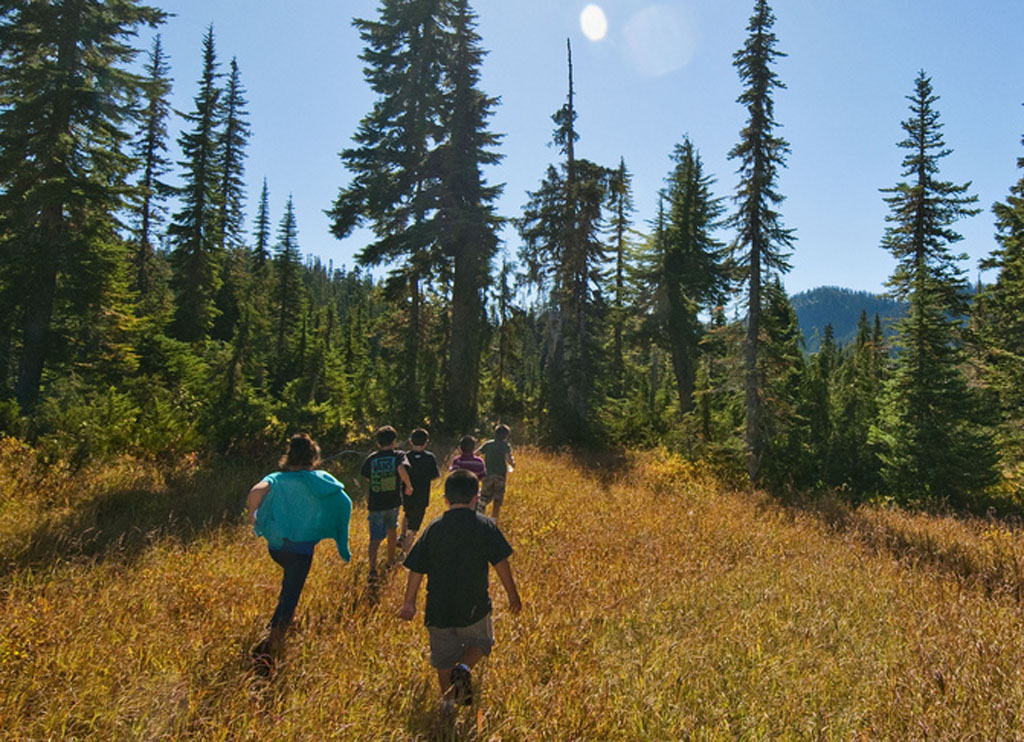Regardless if this is your 50th or 5th spring hitting the trails or finding the perfect early season camp spot, it’s always a good idea to review safety.
Spring weather is fickle. The day may start out clear and sunny and before you know it, snow is falling. Be sure to pack extra layers of clothing, including socks. Is there anything worse than cold, wet feet?
Heading up into the mountains? You’ll most likely encounter snow. And where there is snow in the mountains, avalanches are always a risk. Check your local avalanche forecast before heading out.
In a word, spring hiking is wet. Rivers may be low in the morning, but can be high by afternoon and roads are muddy. Snow is melting and rain is often falling. Be wary of wet surfaces, stream crossings and muddy roads. Be especially wary of rising waters and flash floods. Warm spring days and spring storms can cause very sudden rises in water levels. Pitch your tent well above the highwater mark even if it means a longer walk to the stream, or a slightly less impressive view. If you’re in a campground with designated sites, be sure to think through grabbing that sweet riverfront site. Just because they’re designated, doesn’t mean they’re safe for spring time camping.
Speaking of wet, remember the old adage, “cotton kills.” While it’s great to have a cotton t-shirt or sweatshirt to slip on after the hike, wet cotton clothes rob the body of heat and take a long time to dry out. Be sure to wear synthetic clothes appropriate for the sport and conditions you’re experiencing.
If you’re a paddler, don’t forget that if the air temperature and water temperature aren’t more than 100 when added together, hypothermia is a real concern if you get wet. Probably best to wait for a sunny day, or at the least, be sure to bring some dry clothes and fire starter in your dry bag should you go for a swim.
Joints, muscles, and lungs may have also been hibernating over the winter along with the bears. Don’t start out on a 20 miles trail run if you haven’t been running in months. Be sure to warm up slowly and stretch when you’re done. This goes for peak-bagging, paddling, biking, or any other sport. Work up to longer outings so you don’t injure yourself and miss the rest of the summer.
Check out your gear. Remember that last camp out of the season? The one where the fuel nearly ran out, it rained the morning you broke camp, and you discovered a hole in your sleeping pad. Well, if you’re like most of us, the fuel canister is likely still empty, the tent likely reeks of mildew, and the pad is still punctured. Spend an evening examining, cleaning, and fixing your gear before you head into the wild with a broken tent pole or busted stove. If you’re bringing kids or a newbie, this is especially important.

Speaking of kids and newbies, start easy early in the season. Maybe the three night backpack you’ve been dreaming of all winter isn’t the best early season trip for your new sweetie. Start with something easier and adopt a positive attitude. Remember, you want this person to like camping, hiking, paddling, trail running, or whatever.
Share your experiences and expertise! If you see someone who looks in over their head, who is obviously exhausted, or who is setting up camp in an obvious flood zone when thunderstorms are in the forecast, politely suggest they take a rest, share some of your water, or find a safer place to camp. You don’t have to be a know it all to help someone out.
Have you had a memorable outdoor spring experience? Let us know about it on Facebook or in the comments below.

